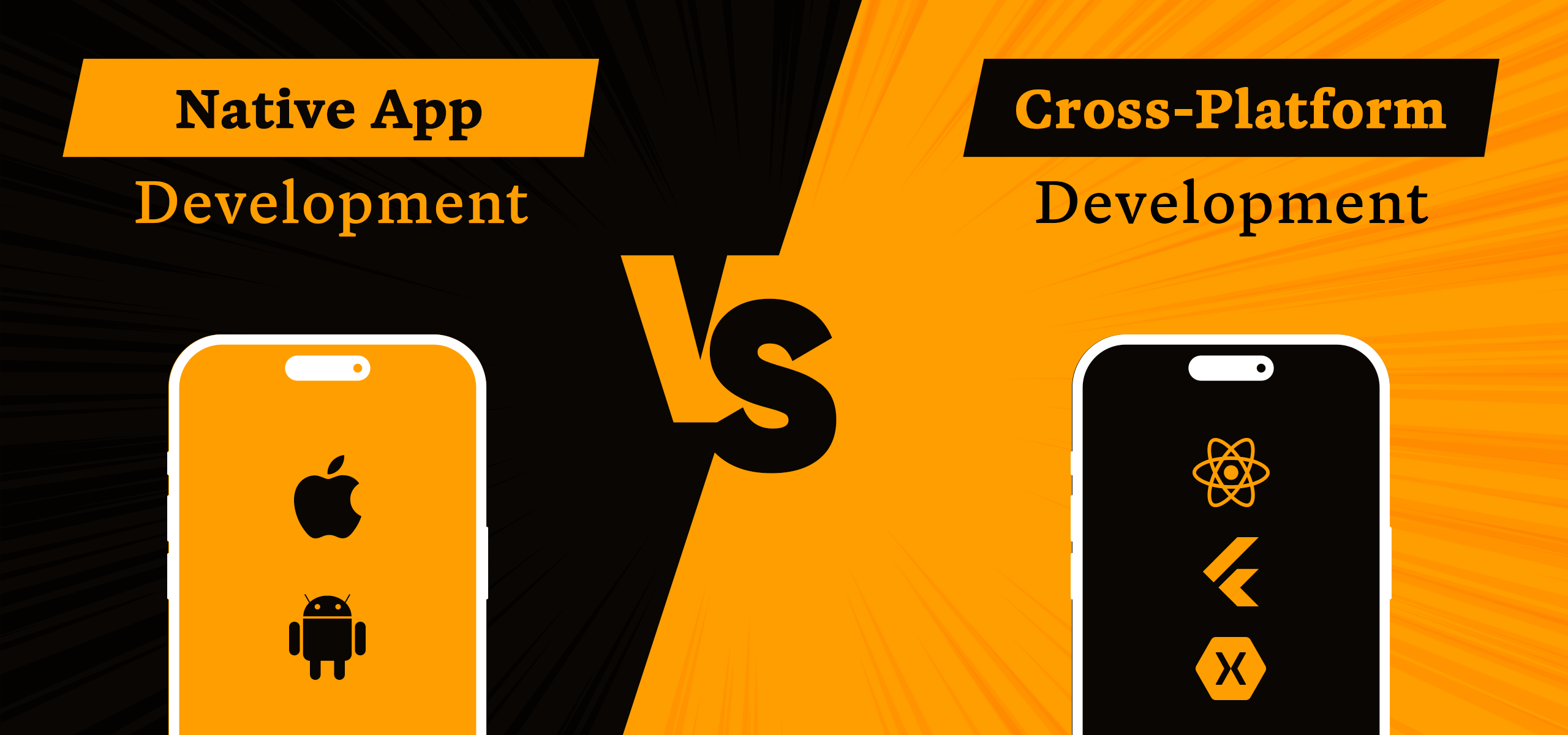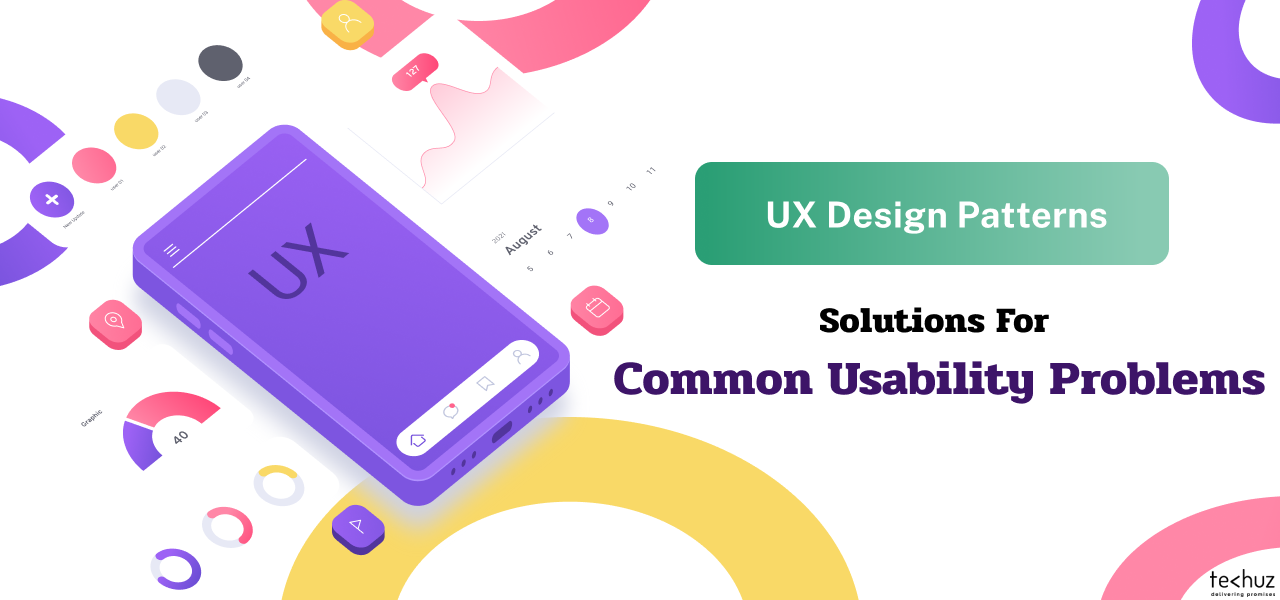Posted on
July 3, 2023
Updated on
March 20, 2024
Read time
 14 mins read
14 mins read
“How long does it take to develop an app?”
That’s one of the most frequently asked questions from our clients. Understanding the app’s development timeline is indeed crucial as it influences various business decisions, including budget planning, resource allocation, meeting investor requirements, and defining the app positioning strategy.
So in this article, we condense our 10 years of mobile app development mobile app development experience to provide you with all the details you need to know about the app development timeline. In this post, we’ll explore:
- The average time it takes to develop an app, detailing the different stages and tasks involved.
- The factors that impact your app development timeline.
- Practical tips to speed up your app development process while ensuring the highest quality standards.
- Sounds like exactly what you’re looking for? Great, let’s dive in.
How long does it take to develop an app?
Typically, an app with its core features can be developed within 12-13 weeks, which is approximately 3 months. This version of the app is called a Minimum Viable Product (MVP), and it will include the must-have functionalities without any optional or secondary features.
To better understand this, take the example of the ride-hailing app Uber. An app like Uber can be developed in approximately 3 months with its core features, including registration, booking and payment processing, real-time tracking, in-app communication, and matching algorithms.
Considering this, here’s the breakdown of the app development timeline based on different development stages and tasks.

How long does it take to plan an app?
App planning duration: 1-2 weeks
The planning stage is the foundation for the entire app development process, making it a critical and pivotal phase. During this stage, crucial decisions are made to set the direction of the project, manage business and user expectations, and increase the overall success of the app. Anywhere between 1 to 2 weeks are dedicated to creating a comprehensive plan for the app. The planning stage encompasses three major tasks: requirement analysis, selecting the technology stack, and creating low-fidelity wireframes.
Requirement analysis
In this task, the app requirements are thoroughly analyzed and documented based on the app idea. Various aspects, including user needs, functionality, industry requirements, and business goals, are taken into consideration to define the app’s requirements. This involves researching and documenting both functional requirements, such as app features and non-functional requirements, such as performance, security, scalability, and legal compliance.

(Example of app requirement document)
Selecting the technology stack and platform(s)
Here, the ideal technology stack, such as programming languages, frameworks, and integrations, as well as mobile platforms are determined based on the app requirements, budget, and overall business plan.
Creating low-fidelity wireframes
Low-fidelity wireframes are created to communicate and visualize the app’s layout, structure, and functionality between the team member and the client. Creating low-fidelity wireframes is a great way to collaborate and enable feedback and improvements for the app at the early stage.
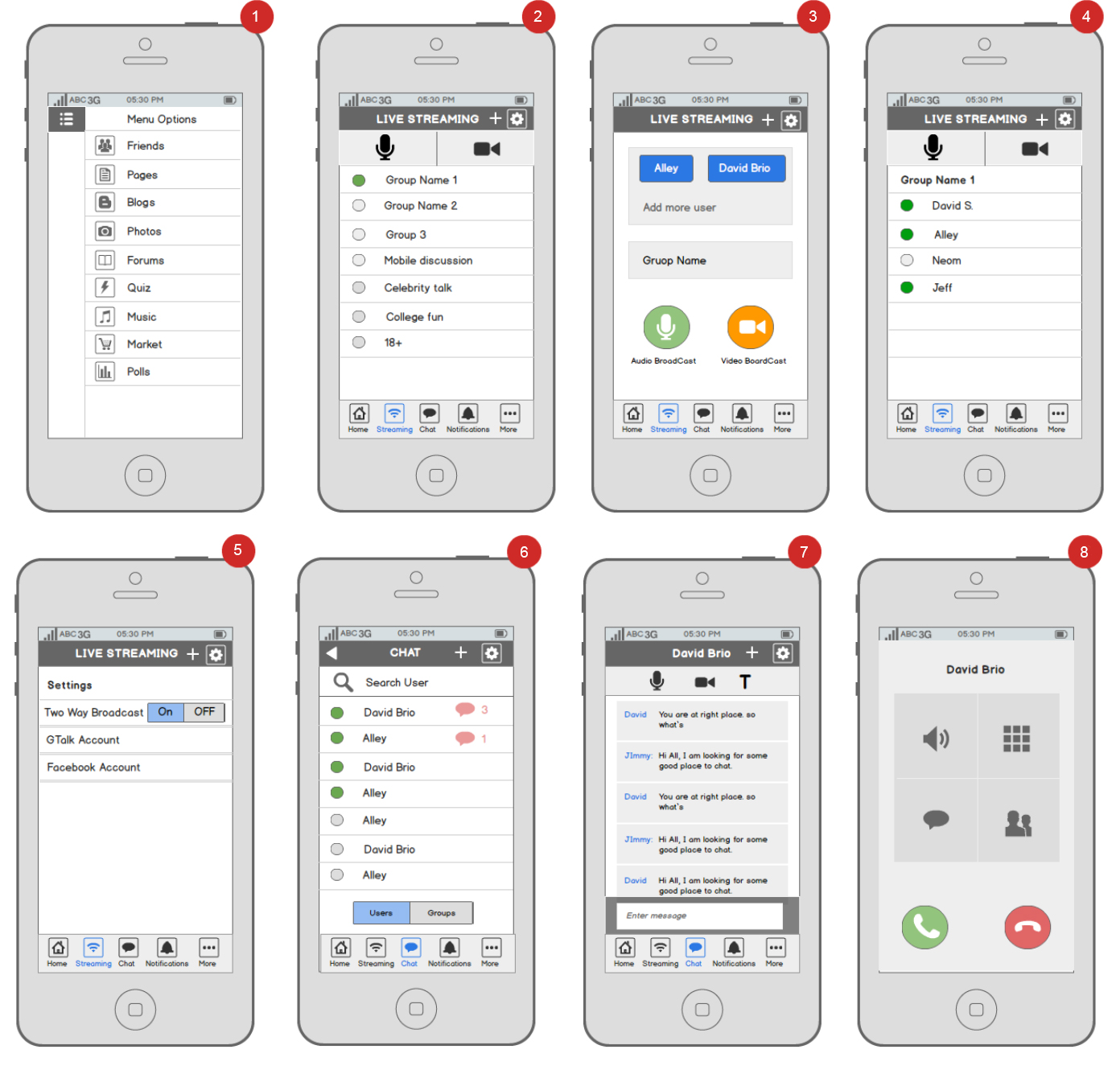
(Example of low-fidelity wireframes)
How long does it take to design an app?
App design duration: 3-4 weeks
The design phase is where the designers transform the app requirements into visually appealing and user-friendly interfaces. This can take 3-4 weeks. Three key aspects of app design that require time and attention include:
- Branding and Visual Identity: Here your app’s visual design is aligned with the overall brand. Things such as the app’s logo, color palette, typography, and visual style, are determined and designed.
- User Experience (UX) Design: UX design aims to create a positive and intuitive user experience by optimizing how users interact with the app. Designers take user interviews, analyze user behavior, and conduct user research to understand user needs and preferences. They create information architecture, user flows and navigation structures that guide users through the app seamlessly. Interactive elements like buttons, menus, and forms are designed and proven UX design patterns are implemented to ensure ease of use and efficient task completion.
- User Interface (UI) Design: UI design focuses on the visual aspects of the app, including colors, typography, icons, buttons, and overall layout. Here, factors like brand identity, user preferences, and industry best practices are considered to create an aesthetically pleasing and consistent interface.
3. How long does it take to develop an app?
App development duration: 6-7 weeks
The development stage is where your app’s logic and design are transformed into a fully functional mobile application. It can take anywhere between 6-7 weeks to complete the development. The major time spend in this phase include: frontend development, backend development, and performance optimization.
- Frontend development: This is where your app’s user interface is transformed from design to a functional frontend. Frontend development includes implementing components, interactions, and navigation of the app.
- Backend development: Here the server-side components are developed that power your mobile app. This includes developing the server-side logic, setting up databases, creating APIs for communication between the frontend and backend, and integrating libraries and SDKs that provide additional functionality to the app.
- Performance optimization: It’s also necessary to spend time analyzing the app performance and optimizing it for a seamless experience. This can include reviewing code efficiency, memory usage, network requests, and loading time. Performance optimization ensures that the app runs smoothly, responds quickly, and provides a seamless user experience.
4. How long does it take to test the app?
App testing duration: 1-2 weeks
Once the app is developed and functional, it is thoroughly tested to ensure that it meets various quality standards of functionality, usability, and performance. A systematic testing process is done to identify and resolve any issues before the app is released. This can take around 1-2 weeks. Depending on the need of the app, some of the common testing that an app goes through includes:
- Functional testing: Functional testing ensures that the app’s features and functionalities work as needed.
- Usability testing: Usability testing evaluates how good the app’s user experience and usability is.
- Performance testing: Performance testing ensures that the app performs well under various conditions, such as different network speeds, device capabilities, and user loads.
- Compatibility testing: Compatibility testing ensures that the app looks and works well on different devices, operating systems, and screen sizes.
- Security testing: Security testing is performed to find any kind of security vulnerabilities in the app.
- User acceptance testing: User acceptance testing or UAT involves end-users testing the app in a real-world environment.
What factors affect the app development timeline?
The app development timeline can vary a lot from one app to another because of a bunch of different factors that come into play. To figure out exactly how long it will take to develop your app, you’ll need to carefully consider these factors. These factors include the technical and design complexity of the app, the choice of technologies and platforms, and how well the development process is managed and communicated. Let’s understand these in detail.
Technical complexity
The complexity of an app refers to the level of difficulty and effort required to develop it based on its requirements, scope, and technical challenges. Put it simply, how tough and time-consuming it’s to bring your app to life. That’s why an app development company will typically assess your requirements before providing a cost and timeline quote. Apps can be classified into three categories based on complexity: low-complexity apps, medium-complexity apps, and high-complexity apps.

Low-complexity apps
These are simple apps with minimal features and straightforward functionalities. They have simple user interfaces, limited integration, basic data management, and rarely require advanced technologies or complex algorithms.
An example of this is Petlink. It is a marketplace that connects pet owners with pet products and service providers. We developed this cross-platform app using React Native with core features such as registration, profile setup, shop listings, service listings, payment management, reviews & ratings, and availability/calendar management.
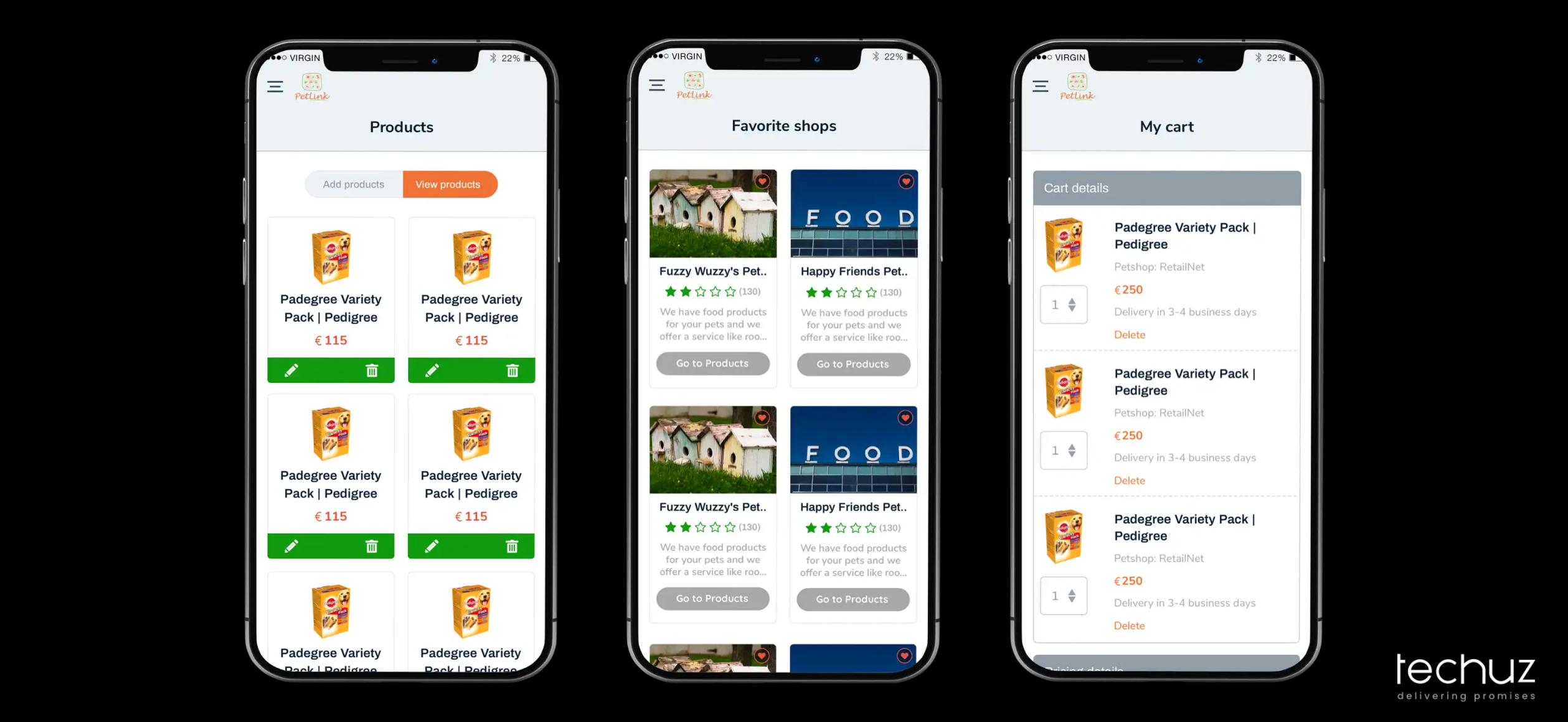
(Example of a low-complexity app – Petlink, a pet products and services marketplace)
Medium-complexity apps
These apps have a moderate level of intricacy and a wider range of features and functionalities. They involve integrations with APIs and SDKs, more complex data management, sophisticated user interfaces, security measures, performance optimization, and considerations for device compatibility.
Consider the example of an app named Engolfer, a super app for golf enthusiasts. The app connects multiple users such as golf players, coaches, and golf facilities to book training sessions, schedule matches, and manage grounds. The app also works as a social media community for golf enthusiasts. Apart from the basic app functionalities, we implement some complex ones such as golf court booking system, match/practice scheduling, and facility management. The app also required advanced integrations for real-time chat, notifications, and multiple payment gateways.
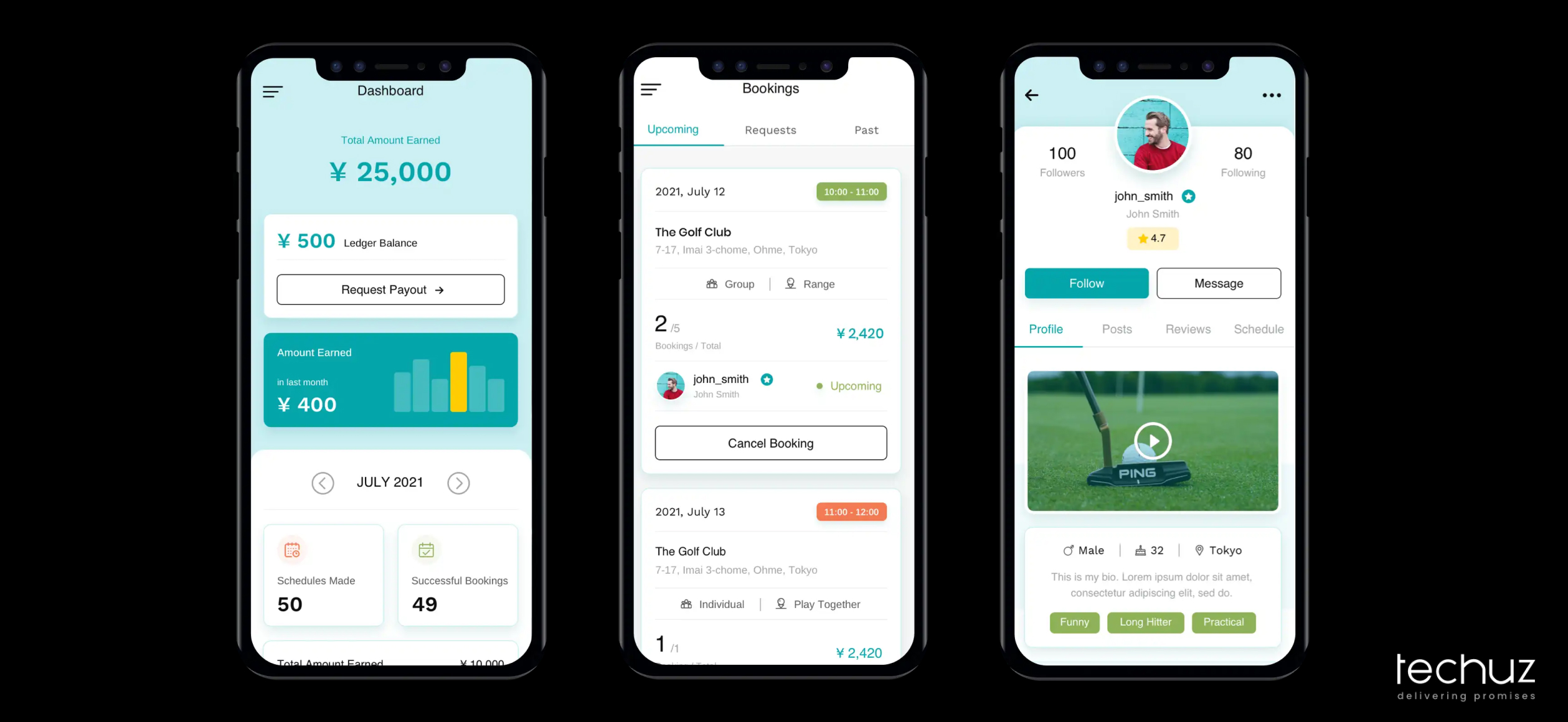
(Example of a medium-complexity app – Engolfer, a super app for golf enthusiasts.)
High-complexity apps
These are the most intricate and challenging apps to develop. They require advanced features, complex business logic, extensive data management, and integration with multiple external systems. Such apps often involve the implementation of cutting-edge technologies and sophisticated algorithms. They may have advanced security requirements, complex user interfaces, and high performance demands.
An example of a high-complexity app is Tutorac, an online learning marketplace. Tutroac connects tutors, education institutions, and students for various kinds of learning needs such as online live training, personalized tutoring, and on-demand video courses. This is a highly-complex app with unique features and functionalities for different parties. Some of the advanced features of this app include creating and delivering live training from the app, class management, video course streaming, tutor job marketplace, and course promotion. It also includes some complex integrations such as BigBlueButton, Brightcove, Chime, and a number of payment gateway integrations.
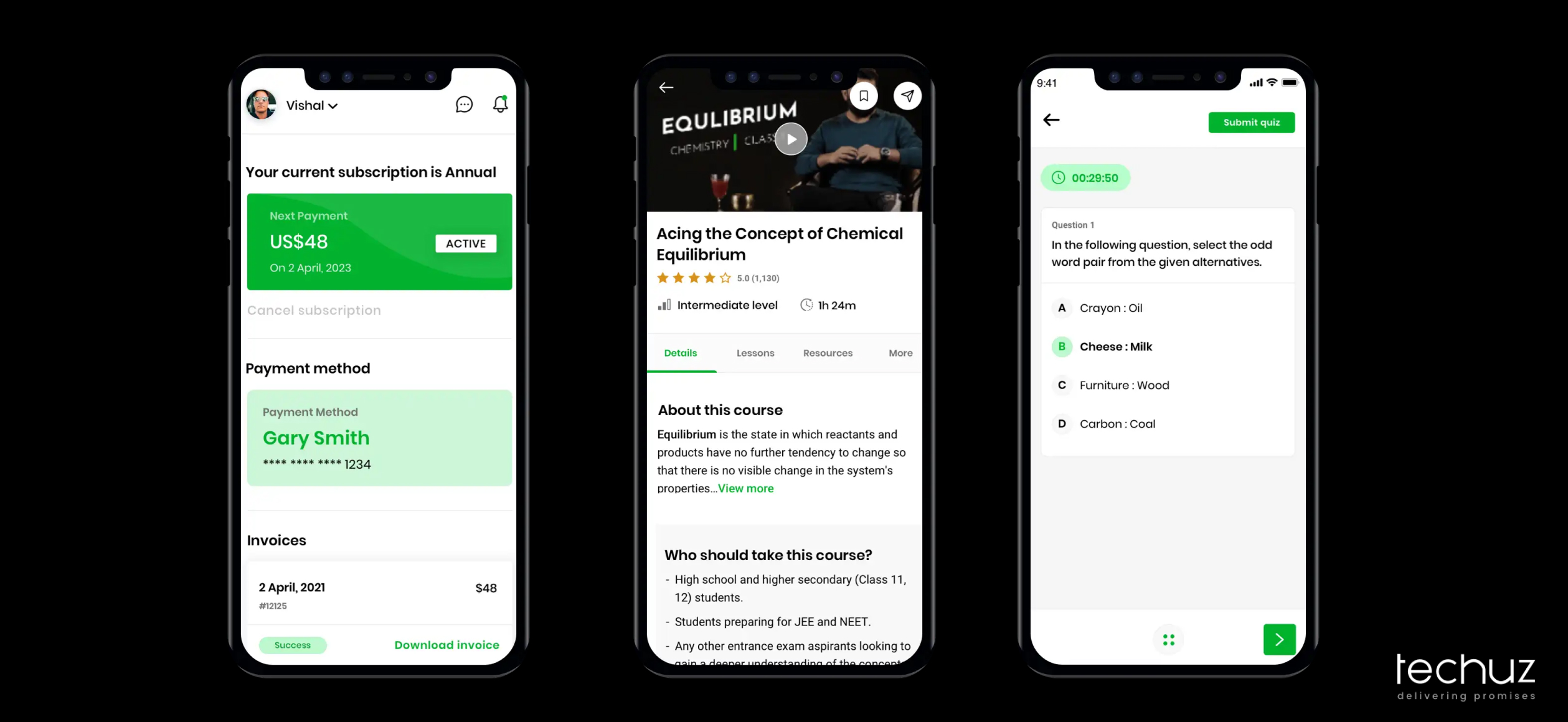
(Example of a high-complexity app – Tutorac, an online learning marketplace.)
2. Development approach: Native or Cross-platform
When it comes to native development, the choice of the platform will directly impact your app development timeline. Are you targeting iOS, Android, or both? Each platform has its own set of requirements, programming languages, tools, technologies, and design guidelines. It’s essential to consider these factors as they can affect the time and effort required for development.
If you choose to go cross-platform development using technologies such as Flutter or React Native, you can build an app for multiple platforms with a single codebase. Thus, saving you a lot of time.
However, it’s important to note that both approaches come with their own advantages and trade-offs. For instance, native development takes separate efforts for both platforms but provides better platform-specific features and experience. On the other hand, cross-platform makes development faster with code reusability but may require additional workarounds for platform-specific features.
3. Design requirements
The UI/UX design requirements massively impact the app development timeline. Just like technical complexity, the complexity of your UI, such as the number of screens, visual elements, and animations can impact the duration. Similarly, implementing UX design processes such as user research, user interviews, usability testing, and iterating to improve the user experience can prolong the process.
4. App development team
Your app development team is crucial in translating your requirements into a fully-functional app. So the number of members in your team and their skills will largely impact the app development timeline.
You must have sufficient team members to effectively handle the development workload. At the same time, the team shouldn’t be even too large to make the coordination and collaboration slow. You need to find the right balance to ensure the project goes at the right pace. Further, the skills and knowledge of your team members also influence the development timeline. Does your team possess expertise in the necessary programming languages, frameworks, tools, and technologies? Also, consider if they have relevant experience and knowledge in building your specific type of app.
5. Development methodology
Like any other software development, your app must be developed with the proper methodology that suits the app requirements. When the right development method is selected, the timeline can be reduced significantly and vice versa.
For instance, the waterfall methodology is suitable when you have well-defined requirements, minimal expected changes, and a clear understanding of the final product. On the other hand, Agile methodology is recommended when requirements are subject to change, frequent feedback is essential, and rapid delivery of working features is desired. So understanding the app requirements and selecting the development accordingly will ensure your app is developed in the optimal time frame.
6. Project management and communication
Efficient project management can streamline the development process, minimize delays, and ensure the project stays on track. Conversely, the absence of project management or an inefficient approach can lead to challenges and setbacks.
Throughout various stages of app development, effective project management enables proper allocation of resources, assignment of tasks, and efficient time management. It also facilitates communication and collaboration among team members, resulting in a more streamlined and predictable app development timeline.
7. Client involvement and feedback
Client involvement and feedback also play a crucial role in app development and can significantly impact the timeline. Clear communication and collaboration between the development team and clients are key factors in ensuring a smooth and timely process.
During the development process, client involvement is important for clarifying project scope and requirements. Timely approvals and feedback from clients help to keep the project on track and avoid unnecessary delays. Additionally, change requests from clients can influence the timeline, as they may require adjustments to the development plan.
Tips to speed up the app development process
- Define requirements clearly: Define and document the app requirements as precisely as possible. This ensures clear communication between you and the team as well as avoids scope creep that can cause unnecessary delays to your development timeline.
- Prioritize features: Rather than adding all possible features in the app, identify and prioritize the main features that provide maximum value to the users. This minimum viable product (MVP ) approach helps in launching an initial version of the app faster with core functionality, gathering user feedback, and adding features based on your user needs.
- Utilize wireframing and prototyping: Creating wireframes and prototypes early on helps you visualize app interfaces, interactions, and user flows. This helps you make quick iterations and validate designs early on without incurring much delay.
- Use frameworks, libraries, components: Use frameworks, libraries, third-party frameworks, and pre-built components whenever possible. This saves you significant time by utilizing ready-made tools and functions rather than building them from scratch.
- Implement automation testing: Implementing automated testing will help you detect app bugs and issues early during development. This can be a great way to save time and at the same time improve app quality.
- Optimize performance early on: Optimize code, minimize unnecessary operations, and consider performance implications early on during the development phase itself. This will save you much time and avoid any kind of rework at a later stage.
- Maintain a lean team: More team members don’t always mean a faster timeline. In fact, sometimes it can be counter productive. So keep your team lean, and avoid unnecessary roles and members that slow downs collaboration and decision-making.
- Outsource app development: Outsourcing is one of the best ways to get the experts to work on your app and reduce the time to market. Hiring an app development company with the right talent, experience, and process is the fastest and most efficient way to develop your app.
Wrapping up
Hope that answers your question about how much time it takes to develop an app. You can expect to develop a fully functional app with core its core features in 12-13 weeks. You can also consider the discussed factors to understand how several things can impact the timeline. Further, by following the best practices, you can always optimize the process to get your app developed in the desired timeframe. However, if are looking to get a precise timeline quote for your app along with the costs, feel free to contact us. We’re here to help you bring your app idea to life.







